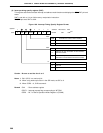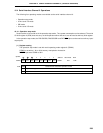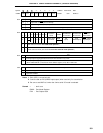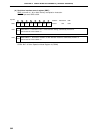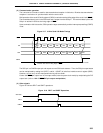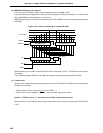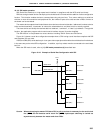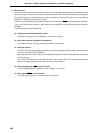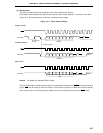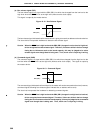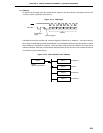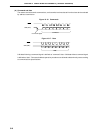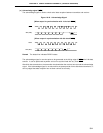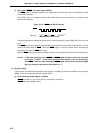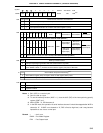
306
CHAPTER 16 SERIAL INTERFACE CHANNEL 0 (
µ
PD78058F SUBSERIES)
(1) SBI functions
In the conventional serial I/O format, when a serial bus is configured by connecting two or more devices, many
ports and wiring are necessary, to provide chip select signal to identify command and data, and to judge the
busy state, because only the data transfer function is available. If these operations are to be controlled by
software, the software must be heavily loaded.
In SBI, a serial bus can be configured with two signal lines of serial clock SCK0 and serial data bus SB0 (SB1).
Thus, use of SBI leads to reduction in the number of microcontroller ports and that of wiring and routing on
the board.
The SBI functions are described below.
(a) Address/command/data identify function
Serial data is distinguished into addresses, commands, and data.
(b) Chip select function by address transmission
The master executes slave chip selection by address transmission.
(c) Wake-up function
The slave can easily judge address reception (chip select judgement) with the wake-up function (which
can be set or cleared by the software).
When the wake-up function is set, the interrupt request signal (INTCSI0) is generated upon reception of
a match address.
Thus, when communication is executed with two or more devices, the CPU except the selected slave
devices can operate regardless of underway serial communications.
(d) Acknowledge signal (ACK) control function
The acknowledge signal to check serial data reception is controlled.
(e) Busy signal (BUSY) control function
The busy signal to report the slave busy state is controlled.



